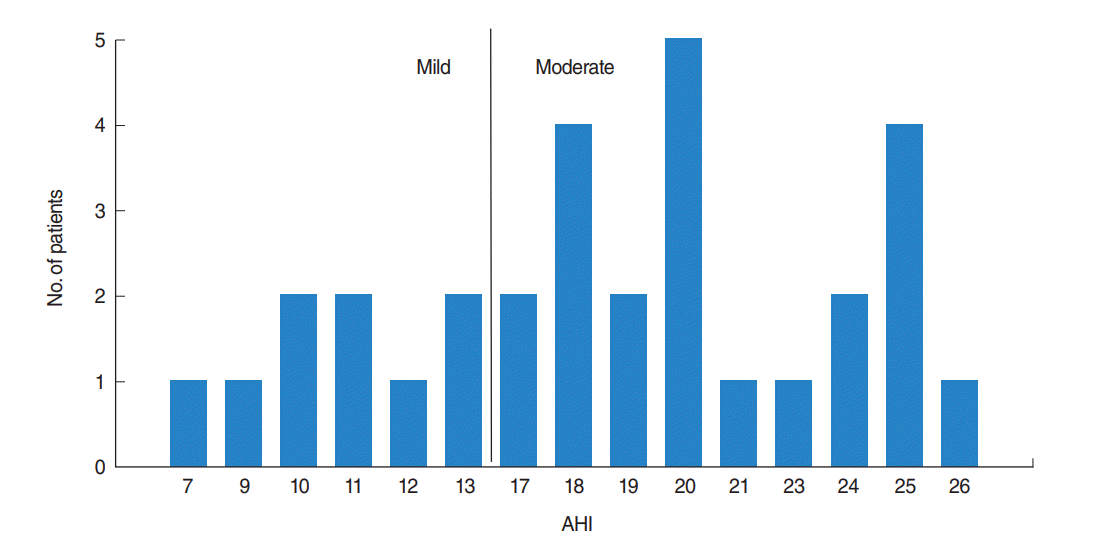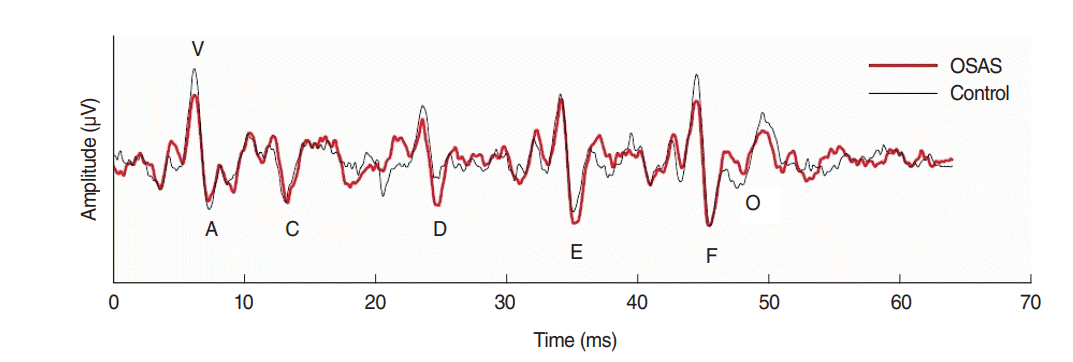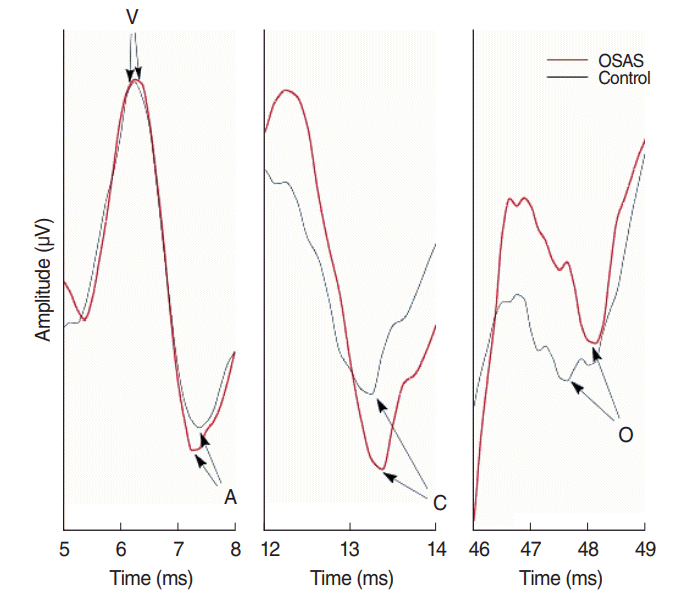1. Javaheri S, Parker TJ, Liming JD, Corbett WS, Nishiyama H, Wexler L, et al. Sleep apnea in 81 ambulatory male patients with stable heart failure: types and their prevalences, consequences, and presentations. Circulation. 1998; Jun. 97(21):2154–9.
2. Inonu Koseoglu H, Kanbay A, Kokturk O. An important concomitancy: interstitial lung diseases and sleep related breathing disorders. Tuberk Toraks. 2014; 62(3):231–5.
3. Hui DS, Wong TY, Ko FW, Li TS, Choy DK, Wong KK, et al. Prevalence of sleep disturbances in Chinese patients with end-stage renal failure on continuous ambulatory peritoneal dialysis. Am J Kidney Dis. 2000; Oct. 36(4):783–8.
4. Das A, Anupa AV, Radhakrishnan A. Reduced plastic brain responses to repetitive transcranial magnetic stimulation in severe obstructive sleep apnea syndrome. Sleep Med. 2013; Jul. 14(7):636–40.

5. Arli B, Bilen S, Titiz AP, Ulusoy EK, Mungan S, Gurkas E, et al. Comparison of cognitive functions between obstructive sleep apnea syndrome and simple snoring patients: OSAS may be a modifiable risk factor for cognitive decline. Appl Neuropsychol Adult. 2015; 22(4):282–6.

6. Fanfulla F, Grassi M, Taurino AE, D’Artavilla Lupo N, Trentin R. The relationship of daytime hypoxemia and nocturnal hypoxia in obstructive sleep apnea syndrome. Sleep. 2008; Feb. 31(2):249–55.

7. Casale M, Vesperini E, Potena M, Pappacena M, Bressi F, Baptista PJ, et al. Is obstructive sleep apnea syndrome a risk factor for auditory pathway. Sleep Breath. 2012; Jun. 16(2):413–7.

8. Seo YJ, Kwak C, Kim S, Park YA, Park KH, Han W. Update on boneconduction auditory brainstem responses: a review. J Audiol Otol. 2018; Apr. 22(2):53–8.

9. Liu D, Chen Q, Huang Z, Zhong J, Zhou L. Auditory brainstem response in severe obstructive sleep apnea-hypopnea syndrome children. Lin Chuang Er Bi Yan Hou Ke Za Zhi. 2005; Oct. 19(19):868–70.
10. Muchnik C, Rubel Y, Zohar Y, Hildesheimer M. Auditory brainstem response in obstructive sleep apnea patients. J Basic Clin Physiol Pharmacol. 1995; 6(2):139–48.

11. Wetmore SJ, Henderson C, Doshier NW, Milligan LB. Auditory brainstem response in obstructive sleep apnea. Laryngoscope. 1988; May. 98(5):499–501.

12. Karnaze D, Gott P, Mitchell F, Loftin J. Brainstem auditory evoked potentials are normal in idiopathic sleep apnea. Ann Neurol. 1984; Apr. 15(4):406.

13. Verma NP, Kapen S, King SD, Koshorek GJ. Bimodality electrophysiologic evaluation of brainstem in sleep apnea syndrome. Neurology. 1987; Jun. 37(6):1036–9.

14. Klatt DH. Software for a cascade/parallel formant synthesizer. J Acoust Soc Am. 1980; 67:971–95.

15. Johnson KL, Nicol TG, Kraus N. Brain stem response to speech: a biological marker of auditory processing. Ear Hear. 2005; Oct. 26(5):424–34.

16. Kraus N, Nicol T. Brainstem origins for cortical ‘what’ and ‘where’ pathways in the auditory system. Trends Neurosci. 2005; Apr. 28(4):176–81.

17. Purcell DW, John SM, Schneider BA, Picton TW. Human temporal auditory acuity as assessed by envelope following responses. J Acoust Soc Am. 2004; Dec. 116(6):3581–93.

18. King C, Warrier CM, Hayes E, Kraus N. Deficits in auditory brainstem pathway encoding of speech sounds in children with learning problems. Neurosci Lett. 2002; Feb. 319(2):111–5.

19. Wible B, Nicol T, Kraus N. Atypical brainstem representation of onset and formant structure of speech sounds in children with languagebased learning problems. Biol Psychol. 2004; Nov. 67(3):299–317.

20. Banai K, Nicol T, Zecker SG, Kraus N. Brainstem timing: implications for cortical processing and literacy. J Neurosci. 2005; Oct. 25(43):9850–7.

21. Wible B, Nicol T, Kraus N. Correlation between brainstem and cortical auditory processes in normal and language-impaired children. Brain. 2005; Feb. 128(Pt 2):417–23.

22. Tahaei AA, Ashayeri H, Pourbakht A, Kamali M. Speech evoked auditory brainstem response in stuttering. Scientifica (Cairo). 2014; 2014:328646.

23. Chung SA, Yuan H, Chung F. A systemic review of obstructive sleep apnea and its implications for anesthesiologists. Anesth Analg. 2008; Nov. 107(5):1543–63.

24. American Academy of Sleep Medicine. International classification of sleep disorders: diagnostic and coding manual. 2nd ed. Westchester (IL): American Academy of Sleep Medicine;2005.
25. Guideline for the diagnosis and surgical treatment of obstructive sleep apnea hypopnea syndrome. Zhonghua Er Bi Yan Hou Tou Jing Wai Ke Za Zhi. 2009; Feb. 44(2):95–6.
26. Yuvaraj P, Jayaram M. Audiological profile of adult persons with auditory neuropathy spectrum disorders. J Audiol Otol. 2016; Dec. 20(3):158–67.

27. Song JH, Banai K, Russo NM, Kraus N. On the relationship between speech- and nonspeech-evoked auditory brainstem responses. Audiol Neurootol. 2006; Jun. 11(4):233–41.

28. Murphy CB, Peres AK, Zachi EC, Ventura DF, Pagan-Neves L, Wertzner HF, et al. Generalization of sensory auditory learning to top-down skills in a randomized controlled trial. J Am Acad Audiol. 2015; Jan. 26(1):19–29.

29. Masuda S, Takeuchi K, Tsuruoka H, Ukai K, Sakakura Y. Word deafness after resection of a pineal body tumor in the presence of normal wave latencies of the auditory brain stem response. Ann Otol Rhinol Laryngol. 2000; Dec. 109(12 Pt 1):1107–12.

30. Russo N, Nicol T, Musacchia G, Kraus N. Brainstem responses to speech syllables. Clin Neurophysiol. 2004; Sep. 115(9):2021–30.

31. Akhoun I, Gallego S, Moulin A, Menard M, Veuillet E, Berger-Vachon C, et al. The temporal relationship between speech auditory brainstem responses and the acoustic pattern of the phoneme /ba/ in normal-hearing adults. Clin Neurophysiol. 2008; Apr. 119(4):922–33.

32. Song JH, Skoe E, Banai K, Kraus N. Perception of speech in noise: neural correlates. J Cogn Neurosci. 2011; Sep. 23(9):2268–79.

33. Vander Werff KR, Burns KS. Brain stem responses to speech in younger and older adults. Ear Hear. 2011; Mar-Apr. 32(2):168–80.

34. el-Kady MA, Durrant JD, Tawfik S, Abdel-Ghany S, Moussa AM. Study of auditory function in patients with chronic obstructive pulmonary diseases. Hear Res. 2006; Feb. 212(1-2):109–16.

35. Johnson KL, Nicol TG, Zecker SG, Kraus N. Auditory brainstem correlates of perceptual timing deficits. J Cogn Neurosci. 2007; Mar. 19(3):376–85.

36. Faure PA, Fremouw T, Casseday JH, Covey E. Temporal masking reveals properties of sound-evoked inhibition in duration-tuned neurons of the inferior colliculus. J Neurosci. 2003; Apr. 23(7):3052–65.

37. Skoe E, Kraus N. Auditory brain stem response to complex sounds: a tutorial. Ear Hear. 2010; Jun. 31(3):302–24.

38. Clinard CG, Tremblay KL, Krishnan AR. Aging alters the perception and physiological representation of frequency: evidence from human frequency-following response recordings. Hear Res. 2010; Jun. 264(1-2):48–55.





 PDF
PDF Citation
Citation Print
Print





 XML Download
XML Download